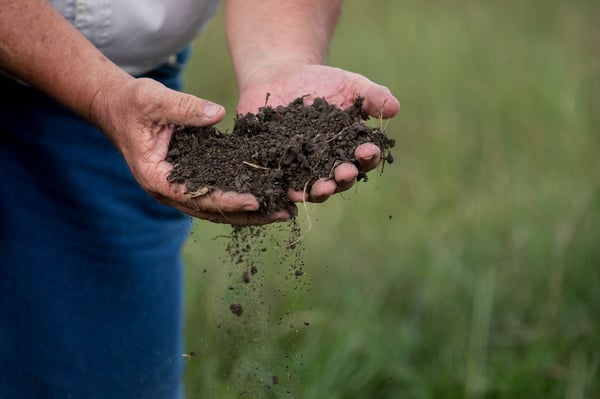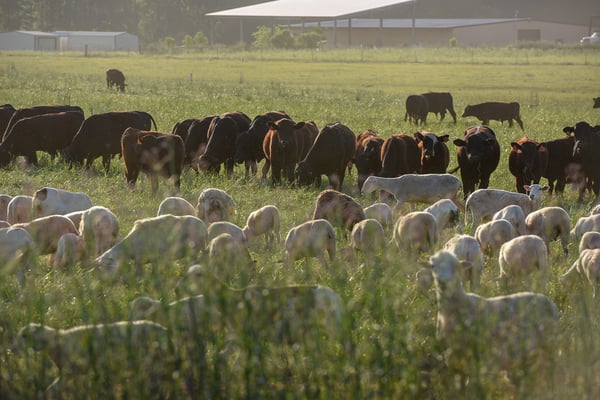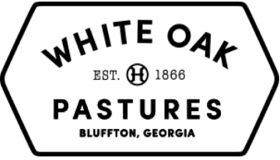
The Hijacking of the American Food System ain't new, it just continues to get a helluva lot worse.
These words were spoken on the floor of the U.S. Senate by Wyoming Senator John B. Kendrick in 1921.
“[Agriculture] has been brought to such a high degree of concentration that it is dominated by few men. The big packers, so called, stand between hundreds of thousands of producers on one hand and millions of consumers on the other. They have their fingers on the pulse of both the producing and consuming markets and are in such a position of strategic advantage they have unrestrained power to manipulate both markets to their own advantage and to the disadvantage of over 99 percent of the people of the country. Such power is too great, Mr. President, to repose in the hands of any men.”
Twenty five years later, about 1946, the situation really began to get intense. World War II was the ULTIMATE GAME CHANGER for agriculture in the United States.
An Agricultural Revolution
The technology WWII provided and the cultural shift it precipitated brought about revolutionary change. These were the most impactful changes that had occurred since the first human domesticated the first animal or placed the first seed in the ground. These radical changes revolutionized the way that the entire world produced food.

The sweeping changes an be categorized into 3 areas:
- Commoditization: "Minimum Standards" were set for farm commodities (cotton, corn, peanuts, livestock, etc).
- Farmers were no longer incentivized to make their production the best that it could be.
- Established "Market Prices" were paid for products as long as they met the minimum standard.
- Farmers would go broke if they put increased quality into a product, because they could not extract their added value from the commodity marketplace.
- Centralization: Production and, more importantly, processing operations were relocated and stratified geographically.
- Vegetables in California. Corn and Soy in the Midwest. Cotton and Peanuts in the South. Cattle feeding in the West. It goes on and on.
- This concentration of value addition dried up and debilitated small, family-owned, home town processing throughout rural America, because larger factory farms could process more cost effectively.
- The small town economies that had been the backbone of our country were gradually impoverished.
- Industrialization: The factory farm model was embraced.
- Shirts were made in the shirt factory, so pigs were made in the pig factory. Cars were made in the car factory, so chickens were made in the chicken factory.
- This production system brought production costs down, but flies in the face of nature. It requires pesticides, chemical fertilizers, antibiotics, and other tools created by reductionist science and marketed by multinational corporations.
- This change ignored the complexities of the living animal system. Nature abhors a monoculture.
Obscenely Cheap, Wastefully Abundant
These changes were wildly successful in making our food cheap, abundant, and consistent. Meaning, they caused our food to become Obscenely Cheap, Wastefully Abundant, and Boringly Consistent.
The changes also brought on horrible unintended consequences that went unnoticed for well over half a century. These dire consequences included impoverished rural communities, cruelly treated farm animals, changes our climate, degraded land, and polluted water.

About 25 years ago at White Oak Pastures, we decided to exit this failing system.
- We De-commoditized.
- We now produce 5 pasture-raised red meat proteins, 5 pasture-raised poultry proteins, pasture-raised eggs, Certified Organic vegetables, and much more.
- All of these products are sold under our proud White Oak Pastures label. We put our name and brand onto every package that leaves our farm.
- Our products are not commodities - we proudly produce artisan creations.
- We De-industrialized.
- We do not operate our farm as a monocultural factory. It is not an uber-high input production machine.
- We operate our farm as a living ecosystem. Several species of humanely treated animals live in symbiotic relationships with each other.
- Our lands are holistically managed to become increasingly a living organic medium that is teeming with life.
- We De-centralized.
- We built processing abattoirs and added zero-waste facilities that have allowed us to vertically integrate our production system. This gave us full control over the quality of our products.
- Our growth caused us to hire 165 employees, making us the largest privately owned employer in the county.
- It also allowed us to breathe life into our 200-year-old farm village, Bluffton, that had slipped almost into oblivion.
Less Than 15 Damn Cents
The average American farmer gets less than 15 cents of the consumer food dollar. White Oak Pastures gets 100 cents of every food dollar you spend directly with us. We use those dollars to employ 165 people in Bluffton, Georgia, a previously impoverished village of 100 citizens. Our payroll is over $100,000 per week, paid out in one of the poorest counties, in one of the poorest states in our nation. We create wealth and prosperity in Bluffton, Georgia, not Wall Street or Silicon Valley.
Wendell Berry said something to the effect that consumers vote every day, with their food dollars, on how they want the world to be. Y'all get to decide. Go ahead and buy your food from whatever production system you feel supports what you believe in.

The industrial eater is, in fact, one who does not know that eating is an agricultural act, who no longer knows or imagines the connections between eating and the land, and who is therefore necessarily passive and uncritical — in short, a victim.
WENDELL BERRY: THE PLEASURES OF EATING

